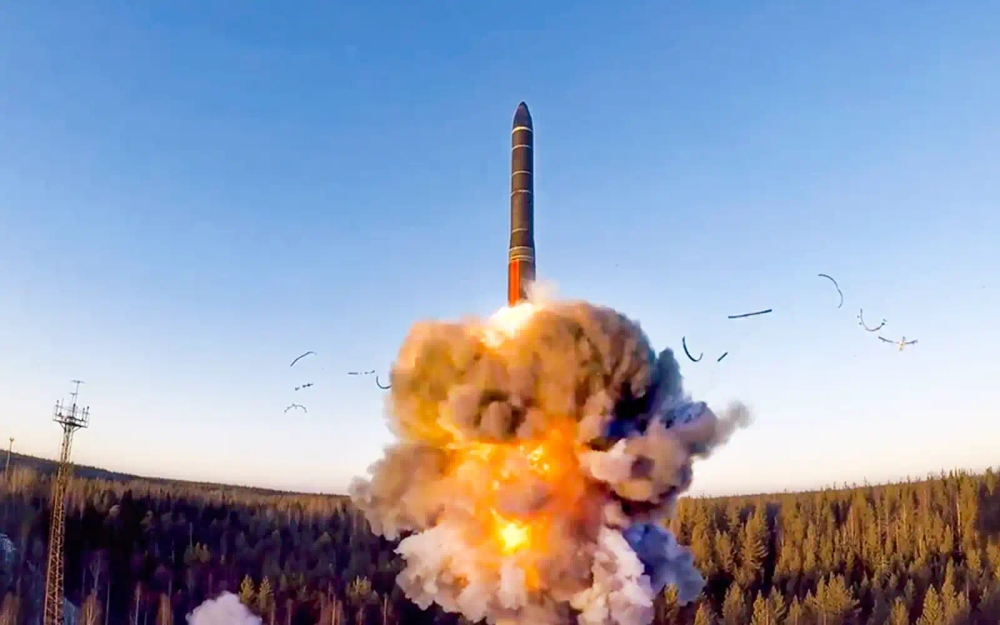Published
- 3 min read
Russia's Nuclear Doctrine: Shifting Power Dynamics and NATO's Response

Russia’s Ascent and the New Security Paradigm
The global balance of power has undergone significant transformation since the Cold War, marked by the rise of Russia as a dominant force seeking to challenge the unipolar world order led by the United States. Central to this resurgence is Russia’s recalibration of its nuclear doctrine, which positions nuclear weapons as pivotal to its defense and power projection strategies.
Economic recovery, bolstered by energy exports, has facilitated Russia’s military modernization. Investments in advanced weapon systems and strategic doctrines underscore its intent to bridge the conventional military gap with Western powers. This reassertion extends to Russia’s engagement in regional conflicts, such as Ukraine and Syria, as it seeks to redefine global power dynamics.
A Shift in Nuclear Posture
Russia’s nuclear doctrine has evolved from a purely defensive stance to a more assertive posture. The 2020 “Basic Principles of the State Policy of the Russian Federation in the Field of Nuclear Deterrence” marks a departure from earlier policies. By broadening the circumstances under which nuclear weapons might be deployed, Russia signals a willingness to use these weapons not just for deterrence but also as a tool for coercion and escalation management.
This shift introduces uncertainty and raises the stakes in regional and global conflicts. Ambiguities surrounding the thresholds for nuclear use further complicate strategic calculations, increasing the risk of misinterpretation and escalation.
NATO’s Strategic Countermeasures
In response to Russia’s evolving nuclear strategy, NATO has adopted a multifaceted approach to bolster collective security in the Euro-Atlantic region:
Enhanced Nuclear Deterrence
NATO is modernizing its nuclear arsenal to ensure its deterrence remains credible and robust. This includes the development of advanced nuclear strike capabilities that can counter potential threats from Russia’s arsenal.
Strengthened Conventional Forces
Recognizing Russia’s doctrine of “escalation to de-escalation,” NATO is investing in precision weaponry, surveillance systems, and rapid deployment capabilities. These measures aim to neutralize the perceived advantages of limited nuclear use in a conflict scenario.
Unified Political and Military Strategy
NATO emphasizes solidarity among member states by fostering cooperation in defense planning and intelligence sharing. This cohesive approach ensures a united front against potential Russian aggression.
Strategic Communication
To counteract Russia’s narrative and signal its deterrence posture, NATO has intensified its strategic communications. Transparent messaging reassures member states while deterring adversaries by highlighting the Alliance’s readiness and resolve.
The Broader Implications for Global Security
Russia’s assertive nuclear doctrine and NATO’s countermeasures reflect the complexities of modern geopolitics. The interplay between these strategies underscores the fragile balance of deterrence that underpins global stability.
The risks of miscalculation or escalation are compounded by the proliferation of nuclear weapons and emerging technologies. This underscores the need for sustained diplomatic engagement and robust arms control mechanisms to mitigate the potential for conflict.
Conclusion
The evolving dynamics between Russia and NATO epitomize the challenges of maintaining global security in a multipolar world. As Russia leverages its nuclear capabilities to assert its influence, NATO’s strategic responses highlight the importance of resilience and adaptability in preserving peace.
The international community must prioritize dialogue and cooperation to address the inherent risks of this new security paradigm. By fostering mutual understanding and establishing clear frameworks for deterrence, global powers can navigate the complexities of modern geopolitics and work toward a more stable and secure future.
